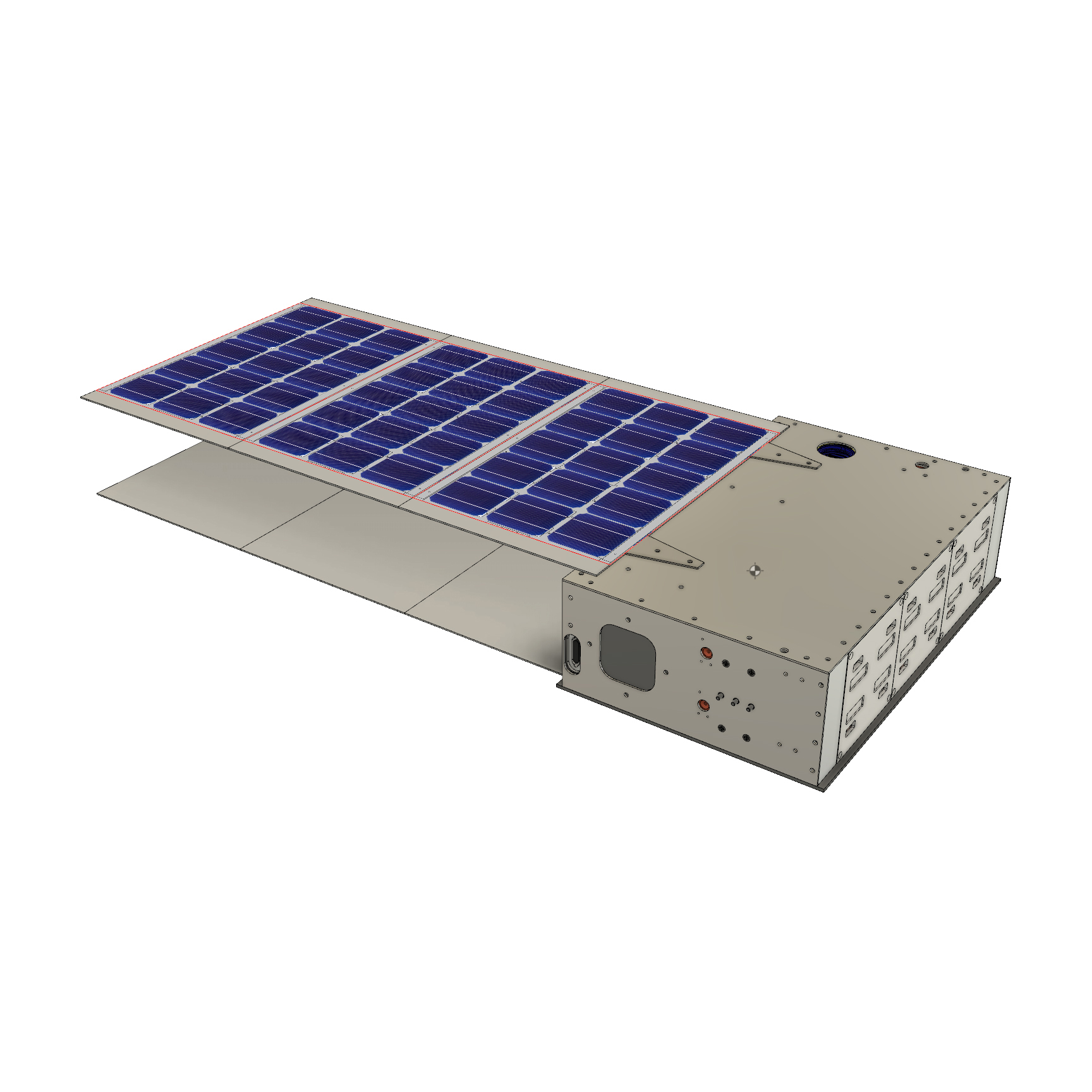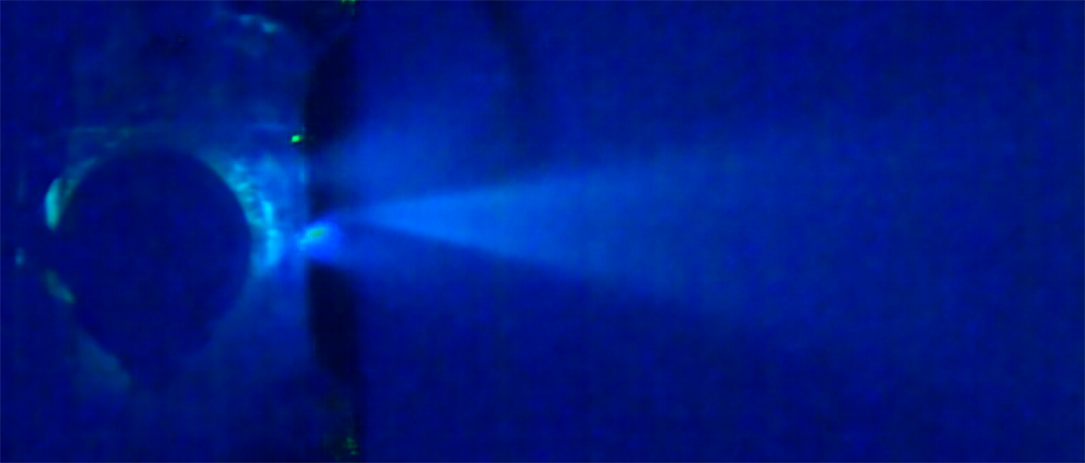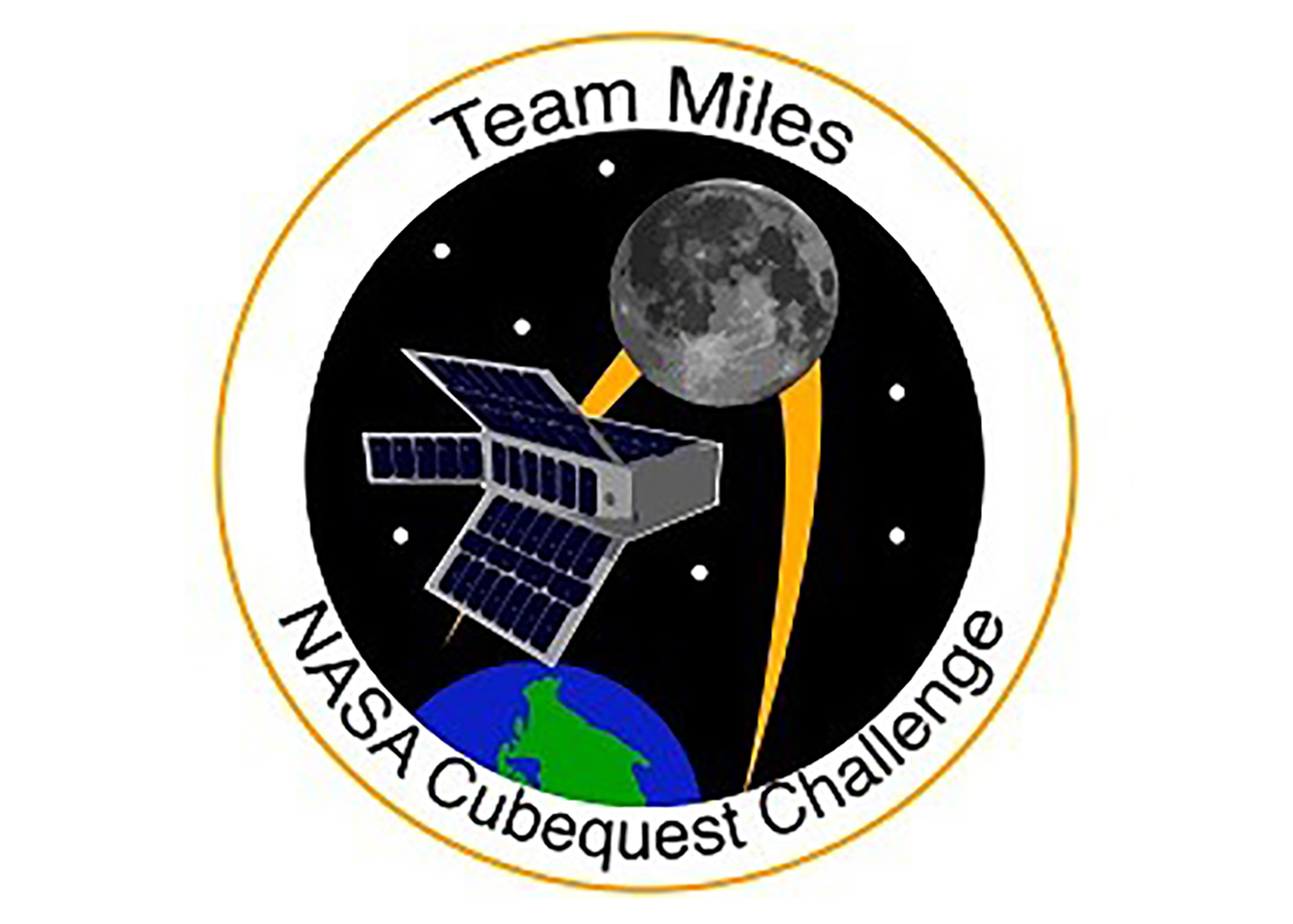For Team Miles and their CubeSat entry, it’s about propelling citizen science to the moon…and beyond.
The breadbox-size Miles is a 6U satellite built to navigate into deep space.
Wesley Faler of Team Miles heads the group of citizen scientists and engineers that initially came together through Tampa Hackerspace in Florida – all participants in the community, nonprofit workshop.
Since Hackerspace, Faler adds that the team now has experts in software development, communications, radiation, as well as project management.
Plasma push
“I explain Cube Quest to the public in simple terms…it’s a drag race to the moon with the other winning entries. That’s inaccurate I know, but you say that and the eyes of people widen and they want to know more!”
The entire Miles mission will be flown autonomously by a sophisticated onboard computer system and propelled by evolutionary plasma thrusters.
Miles Space, in partnership with Fluid & Reason, LLC, is making use of a Model-H ion thruster design for CubeSat propulsion. Faler is the inventor of the patent-pending ConstantQ™ plasma thruster, drawing upon over a decade of research in ion and plasma thrusters.
Maker Movement
Faler is a strong advocate of CubeSats.
“The technology is there. It’s waiting on people to creatively apply it,” Faler advises. “At Team Miles we’re practicing agile engineering,” he adds, “not coming at it with an aerospace mindset.”
Rather, Team Miles is adopting rules of the road stemming from “the Maker Movement,” Faler says. That’s a culture of melding do-it-yourself and do-it-with-others to apply techniques and processes to create distinctive technological products.
“We’re a team of makers, not specialists. The social contract is that people will join as long as they get to try everything,” says Faler. “It’s a very organic structure,” he adds, guiding the team through a decisive yet collaborative and considerate manner.
Independent feedback
Along with plasma thrusters, the team’s CubeSat carries a number of things NASA has never seen before, Faler says. For instance, the Miles spacecraft is making use of a software defined radio for communications with Earth.
“Still, we have to prove that our technology is probably going to work. But for us these brand new ideas frees the mind…it has for me and it did for my team,” Faler contends. “The independent feedback from NASA has been incredibly valuable…whether you win, place, or show.”
Outward bound
Using the thruster and communication technologies, and spacecraft success in thrusting to the minimum of 4 million kilometers required for the deep space prizes, Team Miles is eyeing going farther than this size of craft has ever gone, travelling to a planned 96 million kilometers before ending the mission.
Radiation, both Single Effect and Total Ionizing Dose has been a large part of how the craft was designed. Thermal issues also arise in deep space, and these also need to mitigated with thermal coatings and heaters inside the craft.
Partnerships with other commercial industries have led to the formation of Miles Space, a commercial endeavor to further develop the technology and intellectual property that has come out of the design process.
More about Cube Quest
The Cube Quest competition offers a total of $5 million to teams that meet the challenge objectives of designing, building and delivering flight-qualified, small satellites capable of advanced operations near and beyond the moon. The competition is sponsored by NASA’s Space Technology Mission Directorate and managed by the Centennial Challenges Program at NASA’s Marshall Space Flight Center in Huntsville, Alabama.
For more information about the Cube Quest Challenge, visit:
https://www.nasa.gov/cubequest
For more information about Centennial Challenges, visit:
https://www.nasa.gov/directorates/spacetech/centennial_challenges/index.html





























